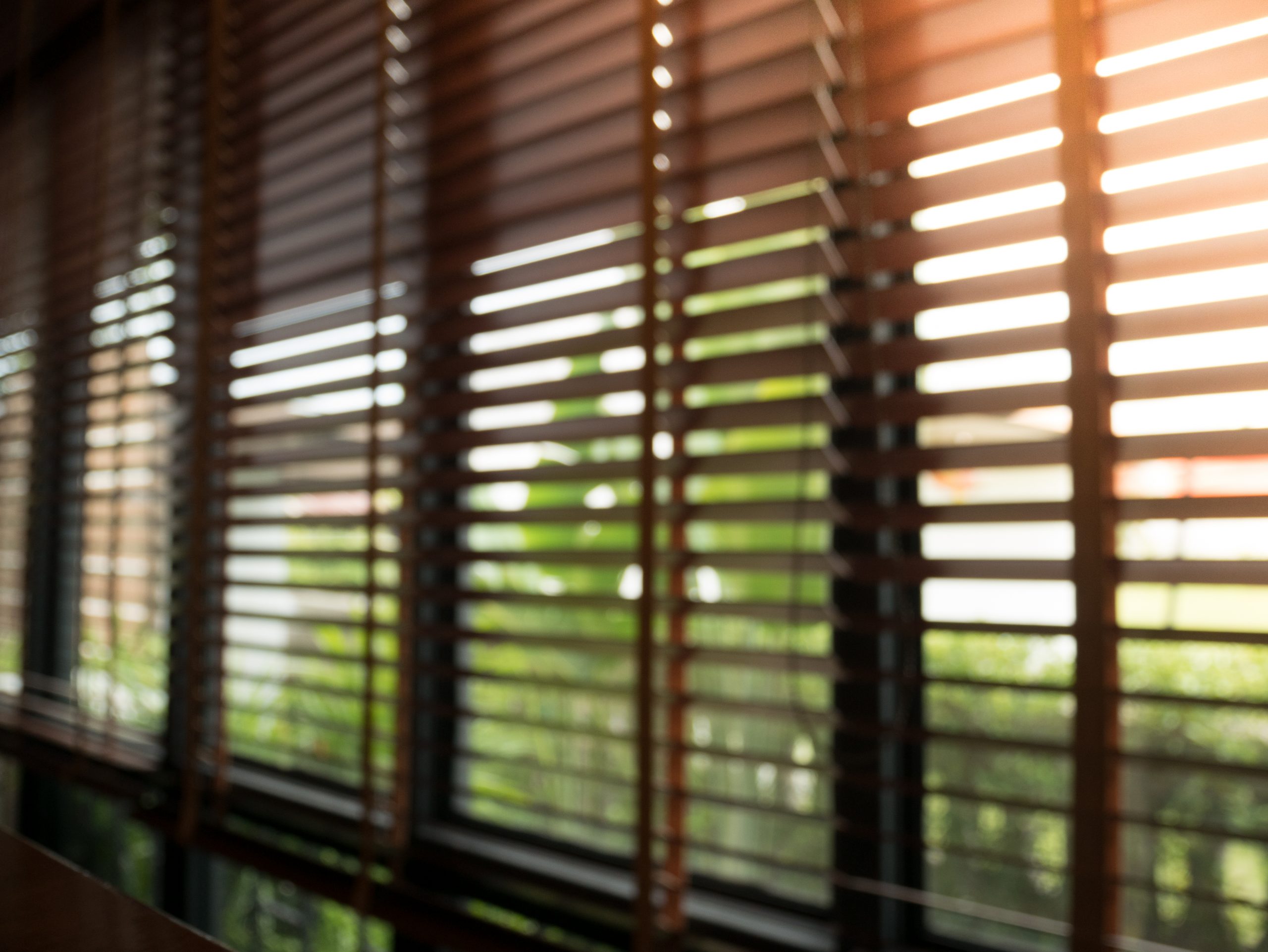Updated in May 2024
Faux wood blinds for windows and wooden faux blinds offer homeowners a choice between the classic warmth of real wood and the practicality of synthetic materials. Faux wood blinds mimic the natural aesthetic of wood while being more affordable, moisture-resistant, and easier to maintain. On the other hand, wooden faux blinds provide a traditional and elegant look, but they can be more expensive, require regular maintenance, and are susceptible to moisture and humidity. Understanding the pros and cons of these options is crucial for making an informed decision that aligns with your budget, maintenance preferences, and the specific needs of your home.
What is faux wood?
Faux wood, also known as fake wood, is a material crafted to resemble the appearance and texture of real wood. Typically made from PVC plastic or a blend of wood and synthetic materials, faux wood blinds offer a cost-effective alternative to traditional wooden blinds. These blinds imitate the natural grain and colour variations of wood, providing a similar aesthetic appeal while being more durable and moisture-resistant. Faux wood blinds are lighter in weight, easier to maintain, and environmentally sustainable due to their reduced impact on deforestation. Overall, faux wood blinds offer a practical and visually appealing solution for window treatments.
Pros and Cons of Faux Wood
| Pros | Cons |
| 1. Affordability: Products that are reasonably priced and within financial reach for a wide range of consumers. | 1. Authenticity: Faux wood blinds may lack the natural grain patterns of real wood. |
| 2. Durability: Capable of withstanding wear and tear over time, ensuring a longer lifespan and minimal need for replacements or repairs. | 2. Weight: Faux wood blinds are heavier than real wood blinds, making installation challenging. |
| 3. Moisture Resistance: Able to withstand exposure to moisture without deteriorating, making it suitable for environments prone to humidity or water exposure. | 3. Environmental Impact: Production may involve non-biodegradable materials and chemicals. |
| 4. Versatility: Flexible and adaptable for various applications or settings, maximising its utility and value across different contexts. |
Wooden blinds
Real wooden blinds, also known as Venetian blinds, have a rich history dating back centuries. Originating in Persia in the mid-18th century, these blinds were brought to Europe by Venetian traders and quickly gained popularity. John Webster introduced them to the United States in 1767, with their use spreading to government buildings and public offices. Wooden blinds have evolved over time, remaining a classic and stylish choice for window coverings, now available in various materials like aluminium and faux wood.
Pros and cons of wooden blinds
| Pros | Cons |
| 1. Natural Beauty: Exhibits inherent aesthetic appeal derived from authentic materials or organic textures, enhancing visual charm with an authentic touch. | 1. Cost: Wooden blinds are typically more expensive than alternative options. |
| 2. Customisation Options: Offers a range of choices for personalisation, allowing individuals to tailor the product to their specific preferences or needs. | 2. Maintenance Requirements: Wooden blinds require regular upkeep to preserve their beauty. |
| 3. Lightweight Construction: Designed with materials and techniques that prioritise reduced weight without compromising structural integrity, facilitating easier handling and installation. | 3. Vulnerability to Moisture: Wooden blinds can warp or grow mildew in humid environments. |
| 4. Sustainability: Incorporates eco-friendly practices or materials, minimising environmental impact throughout the product’s lifecycle and promoting responsible resource usage. |
The verdict
When it comes to choosing between faux wood blinds and real wooden blinds for your windows, the decision boils down to your unique style and practical needs. Faux wood blinds shine with their affordability, durability, and resistance to moisture, offering a smart and budget-friendly solution. On the flip side, real wooden blinds exude natural beauty, provide customisation options, and add a touch of elegance to your space, albeit with higher costs and maintenance demands. If you crave a blend of practicality and charm, opt for faux wood blinds; for those yearning for timeless sophistication, real wooden blinds are the perfect choice.
When should I go for faux blinds?
- When you have a limited budget and need a cost-effective window treatment solution like blinds or curtains.
- In high-humidity areas like bathrooms or kitchens where moisture resistance is crucial.
- If you prefer low-maintenance window coverings that are easy to clean and maintain.
- When you desire a wide range of style options and colours to match your interior decor.
- For eco-conscious individuals looking for environmentally sustainable window treatments.
When should I go for wooden blinds?
- When you prioritise the natural beauty and warmth of real wood in your interior design.
- For those who value customisation options and prefer the ability to stain or paint the blinds to match their decor.
- In spaces where lightweight construction is preferred for easier installation and operation.
- If you are committed to sustainability and prefer window treatments sourced from renewable materials.
- When you are willing to invest in higher-quality window coverings for a timeless and elegant look.
Choose Aquarius Interiors today!
Unlock the potential of your space with Aquarius Interiors! Explore our wide range of curtains and blinds. Contact us today for personal assistance. Plus, benefit from our free measurement and quotation service, making it easier than ever to start your interior journey. Reach out today and let’s create the perfect space together. Don’t forget to visit our gallery for inspiration and to see our stunning designs in action!








